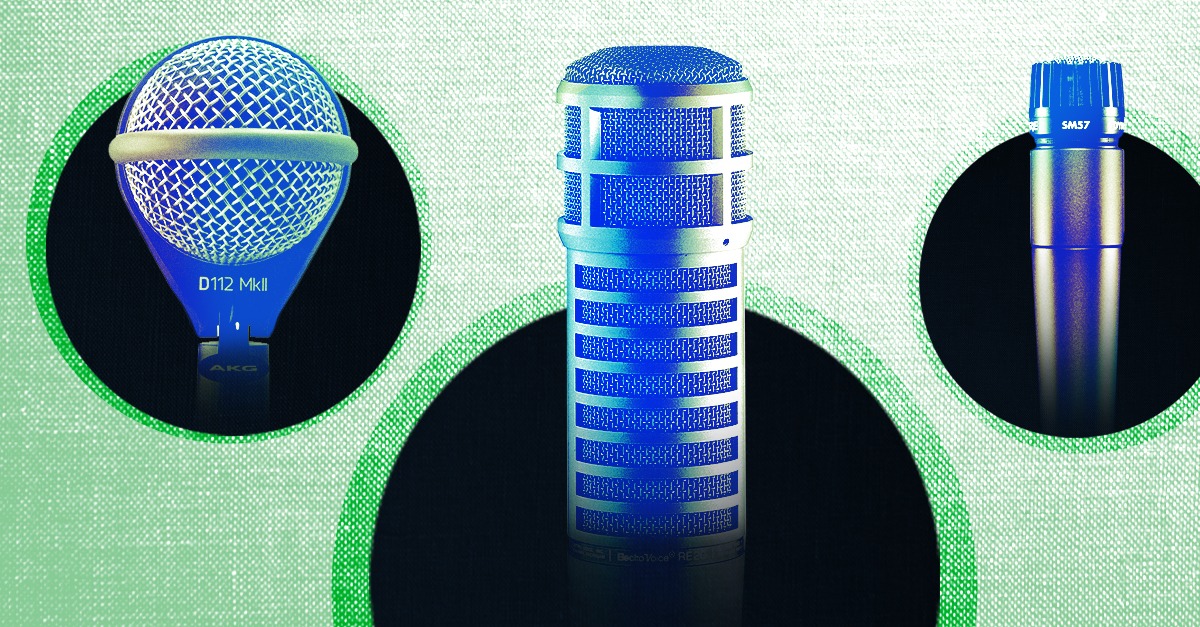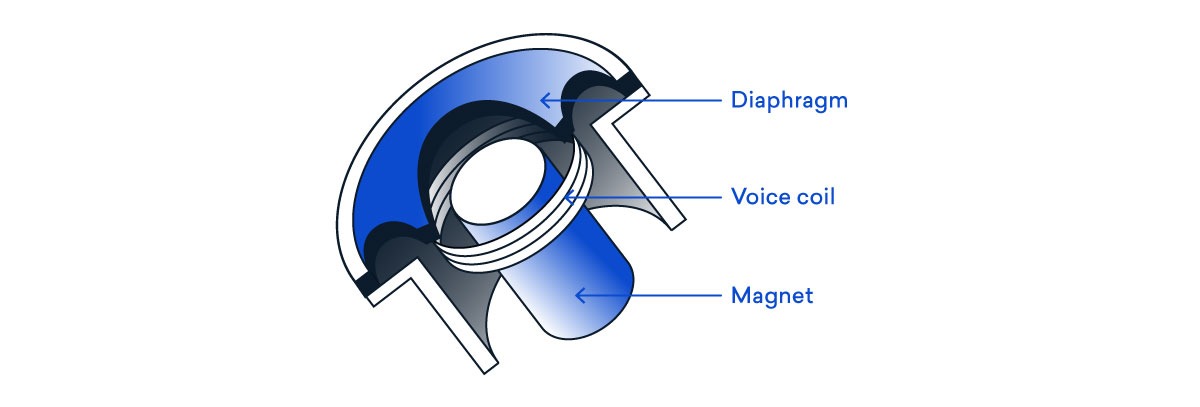
Dynamic Microphones: How to Use The Most Common Mic Type

No two home studio setups are the same.
Depending on your workflow, genre of music and personal style the tools you use to create music can vary a lot.
But if the sounds in your sessions don’t come from VST plugins or sample packs they probably entered your DAW through a microphone.
Not all microphones are the same. The different microphone types used have a huge influence on the overall sound of the music you record.
Dynamic microphoness are an often overlooked mic type that have a lot to offer for your workflow.
What are dynamic microphones?
Dynamic microphones (sometimes called moving coil mics) are microphones that work essentially like a speaker in reverse.
Sound waves vibrate a membrane connected to a coil which moves back in forth in a magnetic field inside of the microphone.
That motion creates a weak electrical signal that can be amplified by a preamp converted to digital audio inside your audio interface.

Dynamic mics are widely used in live sound because they’re inexpensive, durable and don’t need a power supply to work.
Dynamic mics are widely used in live sound because they’re inexpensive, durable and don’t need a power supply to work.
But they’re also important tools in recording that no home studio should be without.
Here’s why.
Why use dynamic microphones?
Dynamic mics offer some unique benefits over other types of microphones.
They are naturally less sensitive, which means they require more gain—but they also capture less bleed from sources around the address point.
You can use this to your advantage when you record instruments that need isolation in a dense mix, such as close mics on individual drums in a drum set.
Dynamics can also handle extreme SPL. That makes them ideal for recording sources that might be too loud for other types of mic.
Dynamic mics also capture transients with all the punch and presence intact, making them a natural choice for percussion or aggressive styles of singing like screaming or rapping.
Finally, dynamic mics are often less expensive than condensers or ribbons. That’s great when you’re starting out, but don’t think that they’re low quality.
Many pro engineers keep dynamics on hand even when they have mics that cost many times more in their mic locker.
What to record with dynamics mics
In most studios dynamics are used for a handful of key duties. I’ll go over each in detail and explain the best ways to use them.
1. Drum close mics
Close mics on individual drums in a drum set is one of the most common uses of dynamic mics.
Close mics on individual drums in a drum set is one of the most common uses of dynamic mics.
The SPL handling, transient response and off-axis rejection makes it easy to capture all the intensity of snares, toms and bass drums.
You wouldn’t want to put a rare vintage ribbon mic in front of a kick drum! The intense gusts of air could damage the fragile ribbon.
Instead, there are several dynamic mics specially designed for bass drum like the AKG D112 or Shure Beta52.
And for toms there’s a clear go-to choice. The Sennheiser MD421-II has been used to record toms on literally thousands of records.
2. Guitar and bass amps
Guitar and bass amplifiers are another great source to record with dynamic microphones.
Guitar and bass amplifiers are another great source to record with dynamic microphones.
Dynamics easily stand up to the intense levels of a cranked up amp. Some dynamics also exhibit a unique frequency response that can help guitars sit where they need to in a mix.
The Shure SM57 is a perfect example of an inexpensive mic that you’ll often find in pro production workflows.
Today many engineers pair an SM57 with a complimentary mic (often a ribbon mic) to capture a full, modern guitar sound.
For bass cabs, a common combination is a Shure SM7B or Sennheiser MD-421 II with a large diaphragm condenser.
3. Vocals
Certain dynamic mics are go-to choices for recording vocals and voice-over. Some dynamics can even sound as detailed and pleasing as a large diaphragm condenser.
The slightly lower sensitivity of dynamics also helps with a bad sounding room. Since they capture less bleed, they’re also less sensitive to problematic room reflections.
The mics most often recommended for this purpose are the Electro-Voice RE20 and the Shure SM7B.
The RE20 is a first choice in radio broadcasting and the SM7B is famous for being the main vocal microphone used on Michael Jackson’s Thriller.
Hot tip: A Shure SM7B sounds fantastic on vocals, but it will need a fair bit of gain from your mic preamp to perform well.
If the pres in your audio interface are noisy, or don’t have enough gain on tap to drive this type of microphone, you can use an inexpensive inline booster to get a bit more gain before noise.
Dynamic duo
Dynamic microphones are a helpful tool for recording.
Considering the low price to get your hands on the popular examples, having one in your studio is worth it.
If you’re looking to record vocals on a budget or capture a loud amp or drum, a dynamic mic could be your best bet.
Gear guides, tips, tutorials, inspiration and more—delivered weekly.
Keep up with the LANDR Blog.



